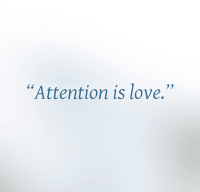 Today’s guest blogger Joanna Brooks grew up in a conservative Mormon household in the orange groves of Cold War southern California. Now, she’s an award winning writer and religion scholar working on Mormon Girl: An Unorthodox Memoir of Belief and Belonging. Find her at askmormongirl.blogspot.com.
Today’s guest blogger Joanna Brooks grew up in a conservative Mormon household in the orange groves of Cold War southern California. Now, she’s an award winning writer and religion scholar working on Mormon Girl: An Unorthodox Memoir of Belief and Belonging. Find her at askmormongirl.blogspot.com.
The Starbucks cups have changed from green and white to red. Here in San Diego, that’s how we know the season has descended, lumbering down from the sky in a haze of petroleum fumes like a jumbo jet full of trouble.
My husband, David, is a Buddhist Jew. I’m a Mormon feminist. Which means, of course, we do it all—Hannukah, Christmas, walking meditation—and we pretty much do it all wrong.
Like the year I rushed to Target on Hannukah Eve to seize the last roll of always-always-understocked blue wrapping paper (anti-Semites! retail outrage!) only to discover upon arriving home that I had failed because there were white snowflakes embossed on the gift tags and according to David snowflakes are in fact Christian.
Or the year David made our first Christmas Eve dinner in our very own house—as a sign of his devotion, the most gourmet and goyische feast one could imagine, starring a roast pork loin stuffed with gourmet cubed bacon—only to end up spending the earliest hours of his Christmas morning hunched over a toilet hurling up bacon-stuffed-pork.
Ahead of us stands a full month of obligatory giftings, truckloads of sugar, frypans of spent oil, grocery sacks of potato peelings, barrels of crumpled gift wrap, kennel stays, viruses in waves, drought, bleating plastic toys assembled by the tiny fingers of Chinese children, long freeway commutes, pottytraining, baby Jesi (that would be plural for Jesus) stolen from manger scenes and nursed at the breast by young daughters, stacks of final examinations, computer crashes, missed deadlines, burnt tempers, hair and dust congealing on the floors, and two wars we never voted for grinding along in the background.
And somewhere in this mess, allegedly, is God.
What we do not have is a Christmas tree. Like many Jews, my husband is allergic to Christmas trees. It’s a social allergy with deep historical roots. What is the Christmas tree but the mermaid on the prow of the ship of Germanic cultural conquest, the USS Anschluss?
What we do have is our annual opportunity to redevelop our sense of humor. Riddles. Miracles. Tales of improbability and overcoming. For example, how does a virgin give birth? Or, how does one day’s supply of oil last for eight? Or, what happens to Jewish husbands who eat bacon-stuffed-pork on Christmas Eve? And, our personal household favorite, are snowflakes really Christian?
All around us the people of San Diego sense the earth turning away from the sun. They retrieve great rolls of dingy white batting from the rafters of their garages and anchor them to their thirsty lawns. They unstring great yardages of small plastic lights and plug into high voltage power grids. Like locusts, they begin to consume whatever sweet, shiny, noisy things appear.
David and I draw a bright circle around January 1. We break the emergency glass and don the magic goggles that will help us distinguish compulsion from custom from spiritual nourishment. We take one last breath of air untainted by sugar and plastic and gasoline fumes and clasp hands as the holiday season rolls in.
Subscribe to my newsletter • Come to my retreat • Fan me • Follow me.











